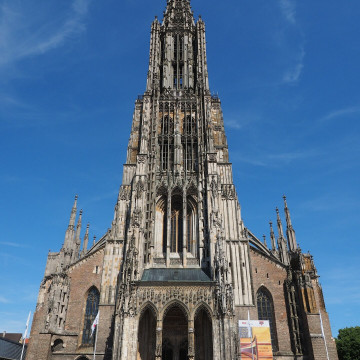Gothic - architectural style definition
Gothic is an architectural style that developed in Europe during the Middle Ages, especially from the 13th to the 15th century. It was characterised primarily by tall, narrow and upright buildings of brick or stone, which were subordinated to the idea of a light and airy form. Richly decorated arches, vaults and arcades were also a major feature of Gothic buildings, giving them a light and airy appearance. Gothic buildings were also dominated by high, sloping roofs and towers and turrets, which were intended to be visible from a distance and serve as orientation.
Gothic was a style that took its inspiration from Romanesque and Byzantine architecture, but took it to a higher level. Its creators sought to create buildings that were as light and airy as possible, allowing for the use of large windows and glazing that made the interiors of buildings well lit. In the Gothic, it was also important for buildings to be as tall and imposing as possible, so various structural tricks were used, such as cross vaults, which made it possible to create tall and spacious interiors without adding unnecessary load-bearing walls.
Gothic was also a style that was known for its rich ornamentation. Gothic buildings were decorated with all sorts of figures, floral motifs and geometries that gave them elegance and prestige. Rich decorations, such as marble floors, were also used inside the buildings.
Gothic is an architectural style that prevailed in Europe from around the 12th to the 15th century. It was characterised by high and slender proportions, the use of pointed arches, elaborate cross vaults and rich decoration.
Precursors of the Gothic
Romanesque: Gothic evolved from the earlier Romanesque style, which was more massive and based on semicircular arches. Romanic developed in Europe between the 11th and 12th centuries.
The most popular Gothic buildings
Notre-Dame Cathedral in Paris, France: One of the most important Gothic cathedrals in the world, it was built between 1163 and 1345 and is known for its distinctive slender towers and stained glass windows.
Chartres Cathedral (France): Built between 1194 and 1220, it is one of the most important examples of Gothic architecture in France. It has impressive stained glass windows and architectural details.
Reims Cathedral (France): Known as the coronation site of French monarchs, Reims Cathedral was built between 1211 and 1275 and is an exceptional example of Gothic church architecture.
Cologne Cathedral (Germany): St Peter's Cathedral in Cologne is one of the tallest Gothic buildings in the world. It took more than 600 years to build (1248-1880). Known for its precise details and monumental tower.
Salisbury Cathedral (England): St Mary's Cathedral in Salisbury is an example of English Gothic architecture from the 13th century. It has the distinction of having one of the tallest towered Gothic gables in England.
Milan Cathedral (Italy): The Cathedral of the Blessed Virgin Mary in Milan, known as the Duomo di Milano, is one of the largest Gothic cathedrals in the world. Its construction began in the 14th century and took more than 500 years to complete.
These buildings are just some of the many significant examples of Gothic architecture. Gothic also influenced many other religious buildings, castles, town halls and houses throughout Europe.













